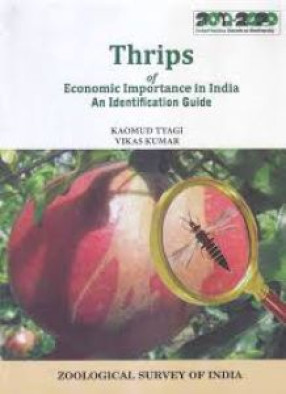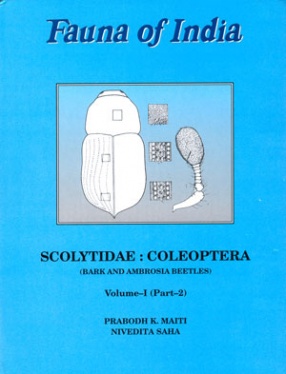Thrips of Economic Importance in India: An Identification Guide
Sucking insect pests (whitefly, jassids, and thrips) have gained importance as a result of better control methods of the large insect pests. These sucking pests not only reduce the vigor of a plant by sucking the sap, but also transmit diseases and affect photosynthesis. Thrips are small or minute, fringed-wing insects, ranging from 1 mm to 2 mm in size, and belong to the order Thysanoptera of class Insecta. They are exopterygotes with holometabolous development, and are one of the major sucking pests, as well as vectors of Tospovirus (family Bunyviridae). Thrips cause substantial economic losses across the globe on a wide variety of agricultural crops. Accurate identification of these insects is of prime importance for proper management, and the objective of the work presented here is to facilitate routine identification of the major thrips pest species in India, and thus to aid in the proper management of crop production.
Pests such as thrips are now recognized as a limiting factor for production of various crops, particularly high investment crops grown either in open fields or in glasshouses. However, thrips are small or even minute in size, and are successful in limiting crop production by reproducing fast and producing large populations, mostly in three to four weeks. They generate economic losses in three different ways. First by direct feeding, which can reduce the quality of a crop and hence hinder exports to other countries. Second, by transmission of tospoviruses which can sometimes destroy a crop within a week, for example watermelon bud necrosis viruses (WBNV) transmitted by Thrips species can destroy a watermelon crop in Southern India especially in Karnataka state. Thirdly, the sheer presence of thrips on harvested fruit and vegetables can lead to an export ban.
In the past twenty years, thrips have been found responsible for losses mainly in horticultural and glasshouse crops, but these tiny insects do not spare field crops as well. Throughout India, species in the genus Stenchaetothrips attack rice seedlings making the terminal leaf white. Similarly, species in the genus Chirothrips feed in the flowers of cereals and grasses. The leaves and fruits of plants are often attacked; flowers of a number of trees are often infested with species like Thrips hawaiiensis, Frankliniella schultzel, or Megalurothrips species. Cajanus Cajan is an Important legume crop in North India that has been found to be heavily affected by Megalurothrips usitatus. Pomegranate fruits can be easily spotted with colonies of Rhipiphorothrips cruentatus, and the flowers by Thrips hawaliensis. Jatropha species, a major biofuel plant, are attacked by R. cruentatus and Retithrips syriacus In South India and Sikkim.
Get it now and save 10%
BECOME A MEMBER











Bibliographic information
Vikas Kumar